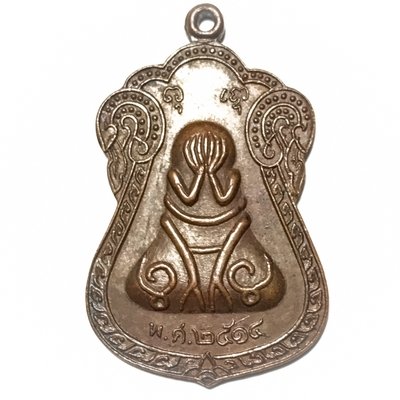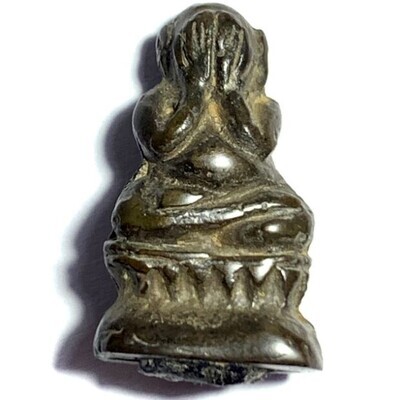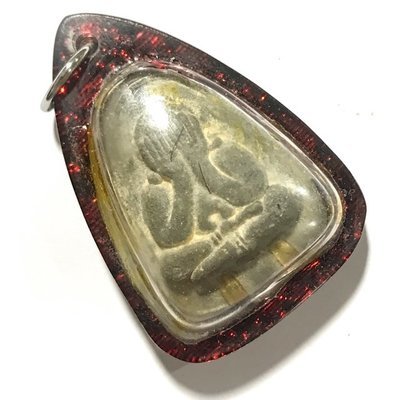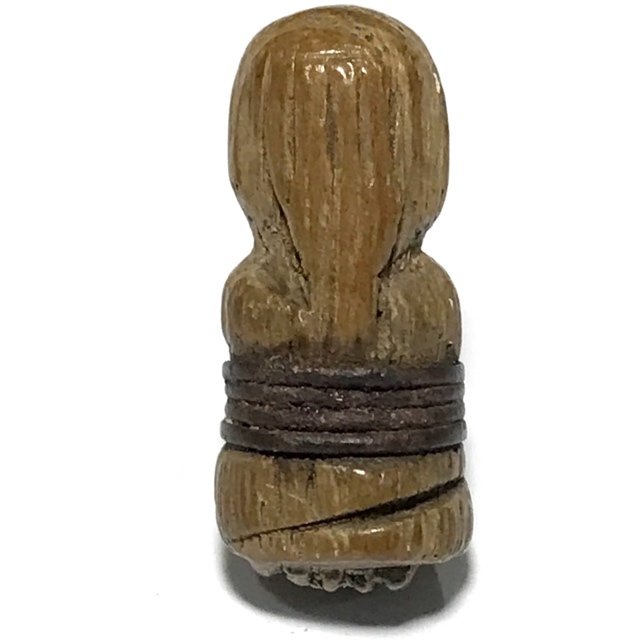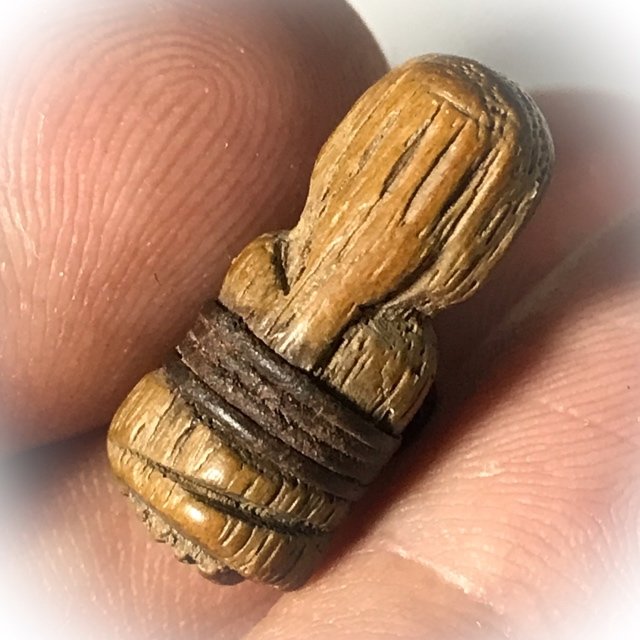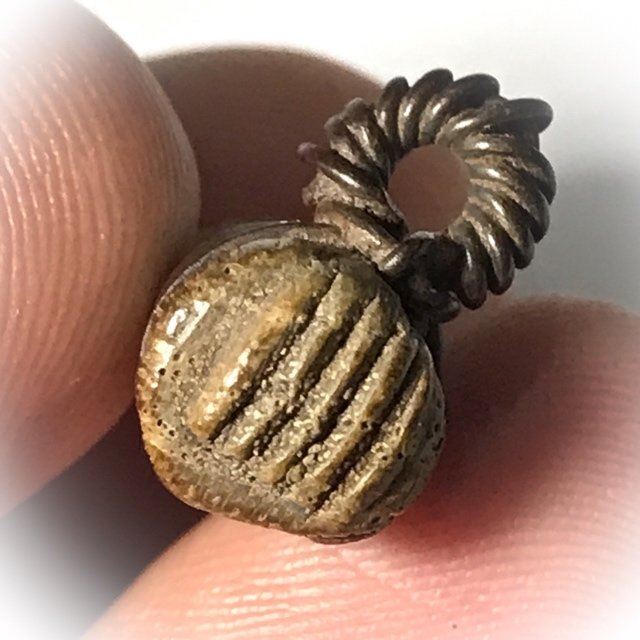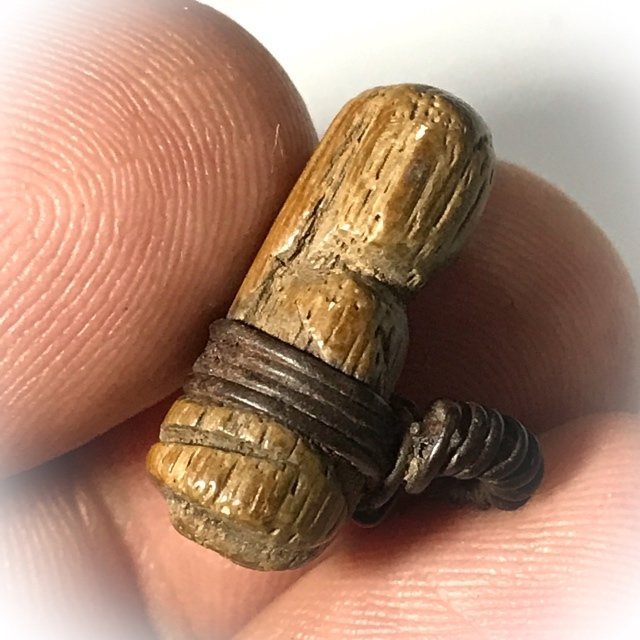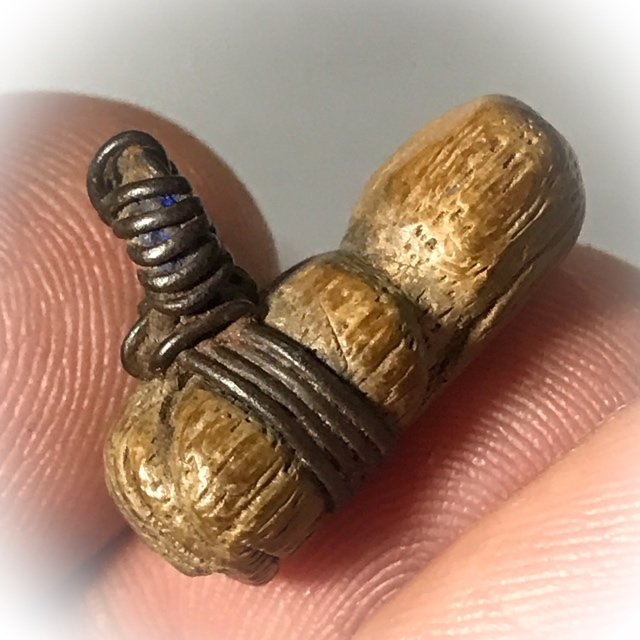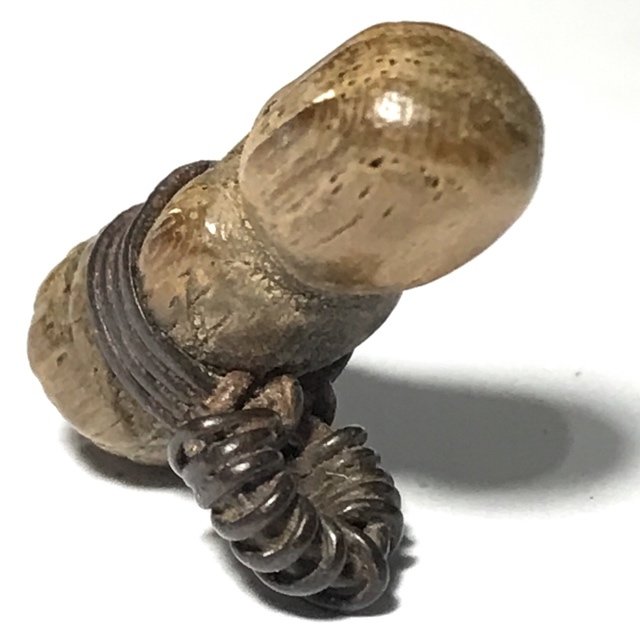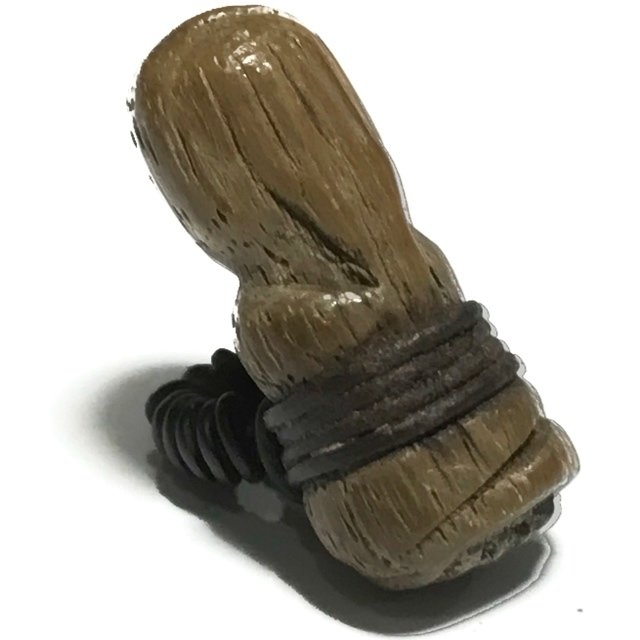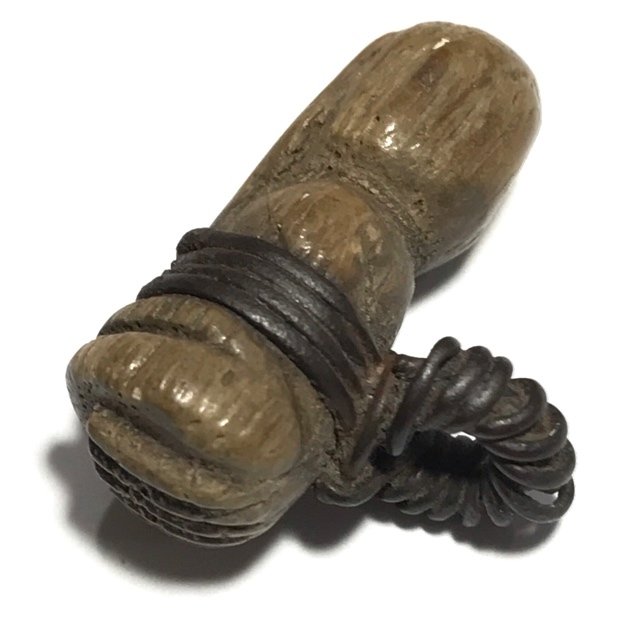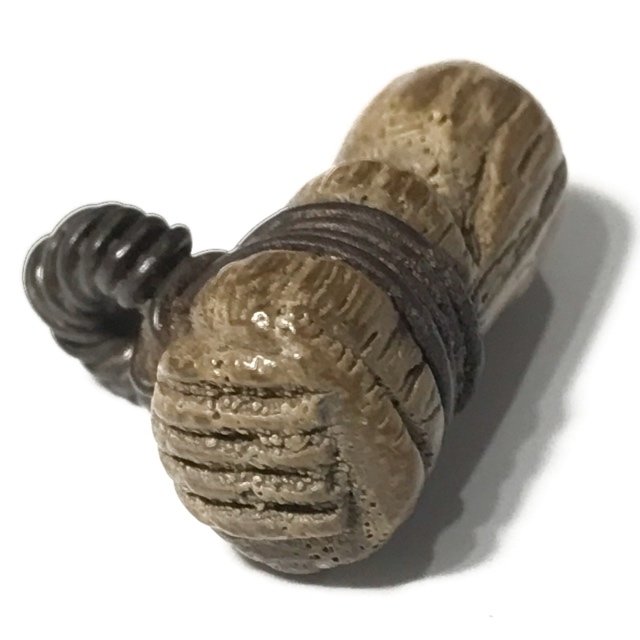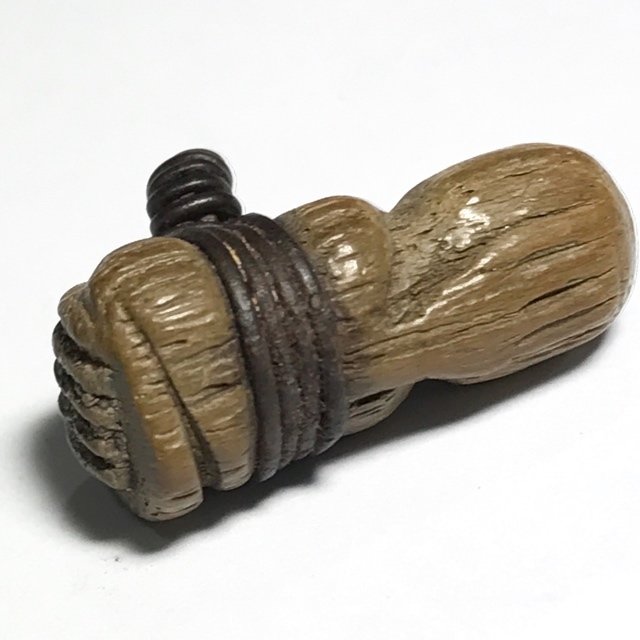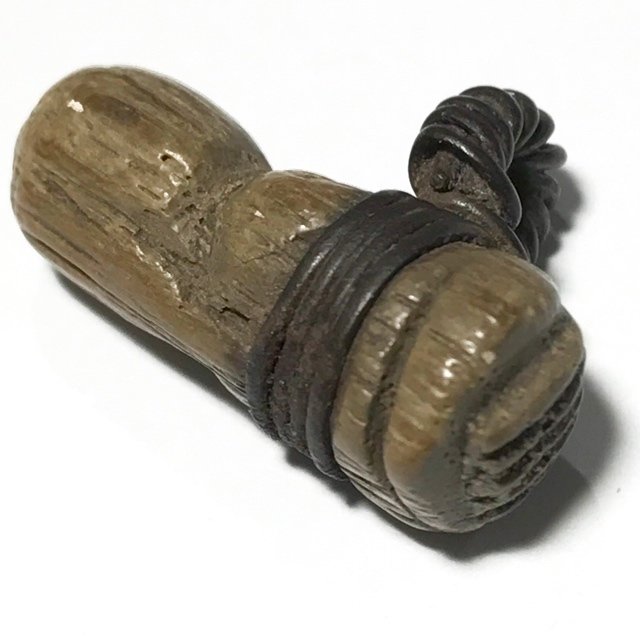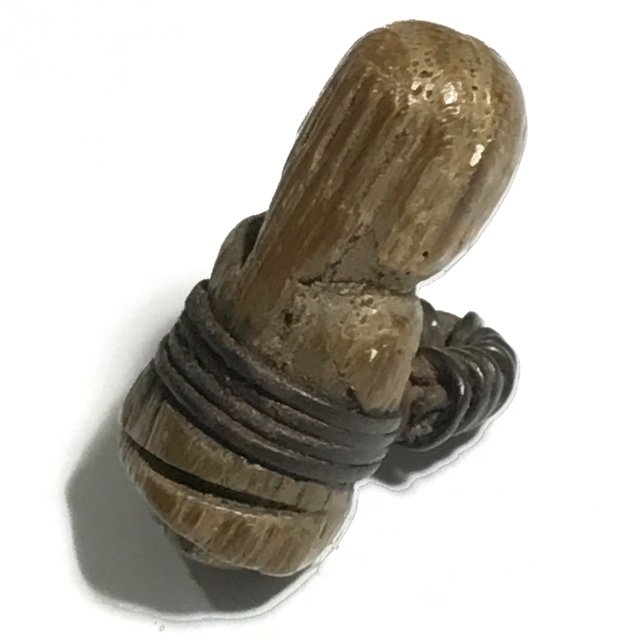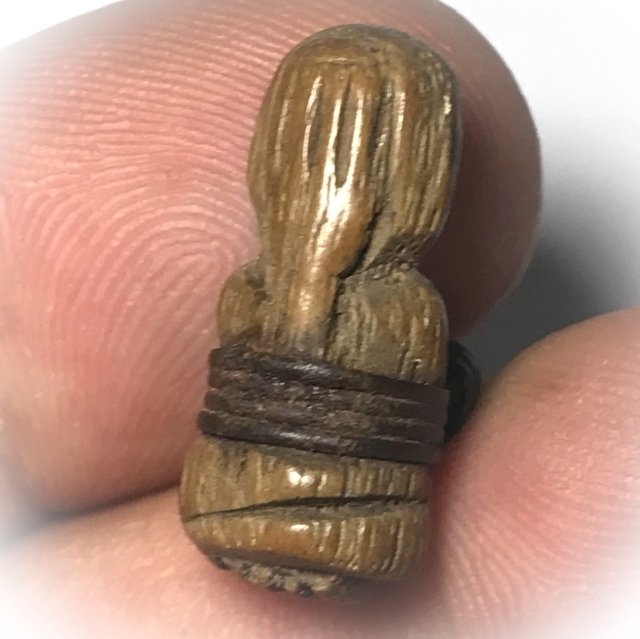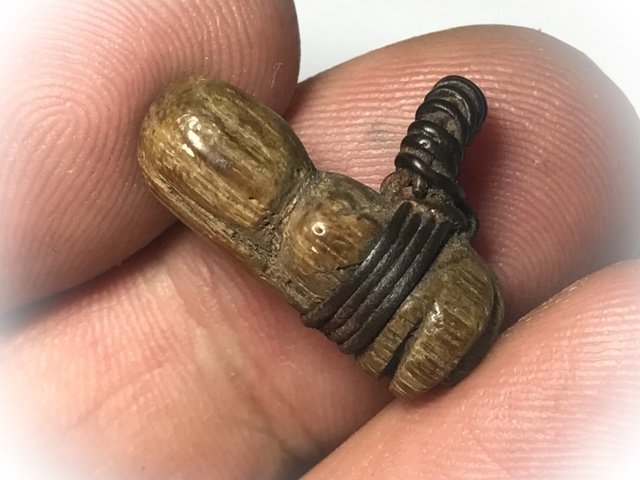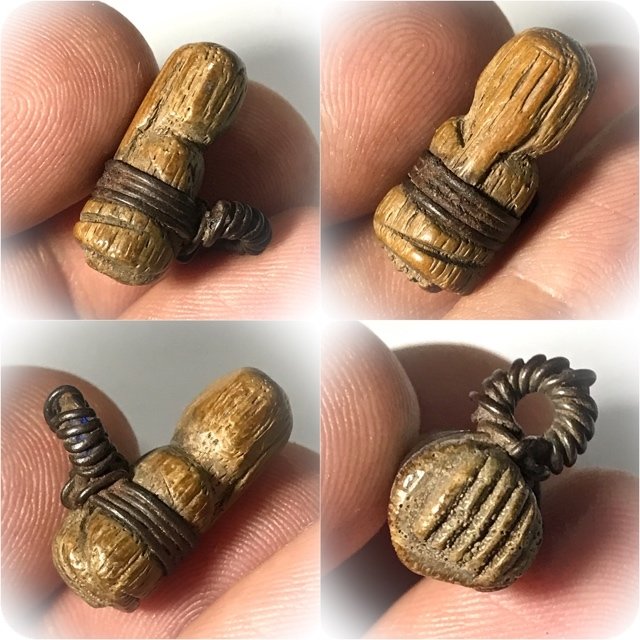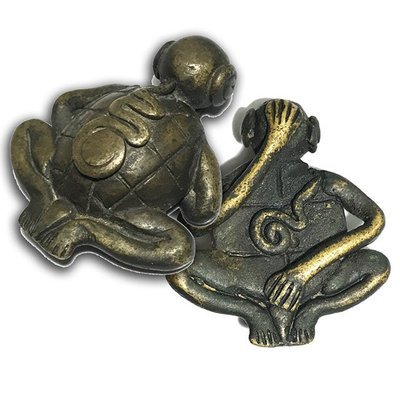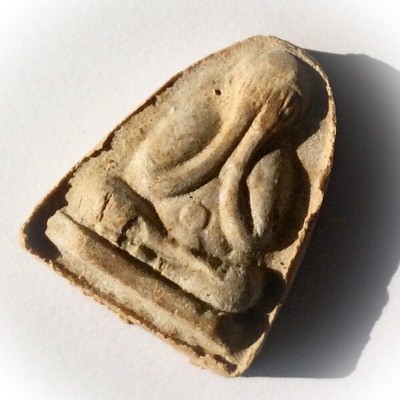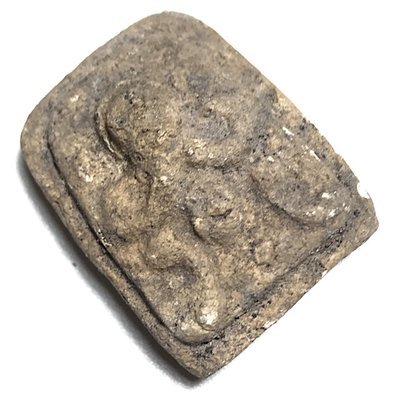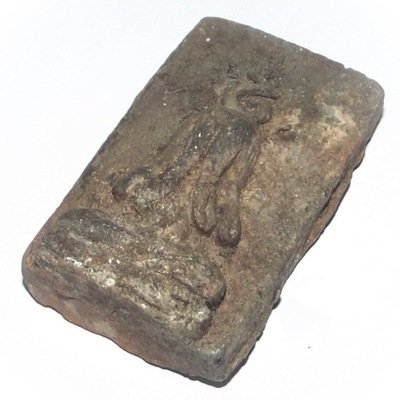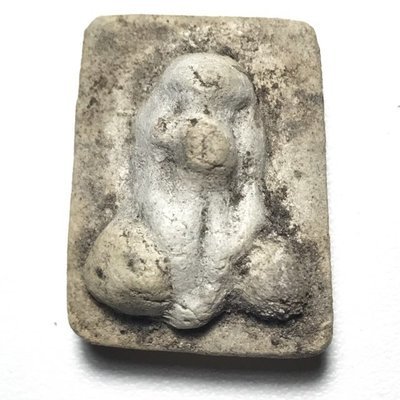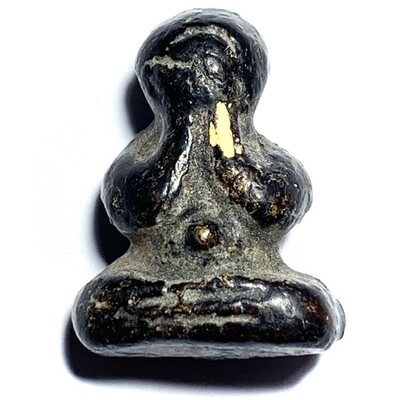Presenting a tiny but powerful and rare classic amulet from one of the Great Khao Or Masters of the 20th Century, Rian Glom Lek Hlang Chedi 2505 BE Nuea Tong Daeng Miniature Guru Monk Coin Por Tan Klai Wajasit
This Sacred amulet of the Great Khao Or Master of Nakorn Sri Tammarat, Master of Wat San Khan and Wat Pratat Noi, is a very rare amulet from Por Tan Klai’s 2505 BE Blessing Ceremony Edition, and is considered a ‘Jaek mae Krua’ type amulet (meaning ‘give to the kitchen maids and temple helpers’), which is suitable not only for men, but due to its miniature size, a perfect amulet for ladies or children to wear.

Rian Glom Lek 2505 BE Por Tan Klai Wajasit Wat Suan Khan
The 2505 BE edition of amulets of Por Tan Klai, is a highly preferred edition, which saw his famous ‘Rian Glom’ round Monk coin amulet with Chakra released, The Rian Glom Lek Hlang Chedi, and the Roop Tai Por Tan Klai Guru Monk Blesséd Photographamulets such as look om chan hmak and ya sen tobacco balls, and sacred powder amulets of various models.
A very rare and highly prized amulet for the devotees of Por Tan Klai to associate with his image and pray to him with a blessed image of the Guru, and the Chedi Relic Stupa on rear face for Buddhanussati and Marananussati. A powerful and Sacred amulet which has passed through the hands of the Guru and been blessed by him.
Por Tan Klai was one of the Top Guru Master Monks of the Last Century, and is considered one of the Four Great Masters of the Previous Generation of Lineage Masters of the Khao Or Southern Sorcery Lineage.
Kata Bucha Por Tan Klai
Pra Pid Tawarn Mai Gae Pim Jiw Thak Luad Hand Carved Sacred Wood Circa 2430 BE Luang Phu Rod Wat Ko Non
An Extremely rare and precious hand carved ancient amulet of the great Luang Phu Rod, of Wat Ko Non, Guru and Mentor to the Great Luang Phu Iam (Wat Hnang). The amulet is carved from sacred wood, and bound with copper wire with a pendant hoop for attachment, in the form of the Pra Pid Tawarn Nirodha Buddha, with hands covering facial and bodily orifices, and is a Pim Jiw Minature Model measuring Circa 2 Cm high x 0.8 Cm wide base. The Pid Ta of LP Rod enjoys great fame for its powerful magic.
The temple of Wat Ko Non is a very famous temple for possessing the Lineage Source of the Wicha and featured in the famous Biographies of two Great Lineage Masters (Mentor and Apprentice), of olden days, namely the Great Luang Phu Rod, and Luang Phu Iam Suwannasaro, the ex abbot of Wat Hnang, in Bang Khun Tien
There is not much documented information about Luang Phu Rod's life before Ordination, because in Olden days people did not register or keep records of things as much as we do in the present day, but from what evidence has been found, it is thought that Luang Phu Rod was born and grew up as a local of Klong Bang Khwang District, in Tambon Kung Than Municipality, in Amphoe Bang Khun Tian Metropolitan District of Nontaburi.
He was the abbot of Wat Nang Non during the time of Pra Bat Somdej Pra Jom Glao Jao Yuu Hua King Rama 4, and was an Adept Practitioner of Vipassana Kammathana who became Abbot of Wat Nang Nong temple, and was given the Royally Decreed Title of 'Pra Pawanagosol Thera.
During his time as Abbot there, His Majesty King Rama 4 traveled to visit Wat Nang Nong for the Kathina Robe Giving Ceremony, but became offended because Luang Phu Rod did not use the Royal Terminology when speaking with the King, and so his Royal Decree Title was removed, Luang Phu Rod had his Royal Pat Yos fan confiscated and was stripped of Royal status, and moved from Wat Nang Nong to stay at Wat Ko Non.
It is believed that the refusal to because Luang Phu Rod refused to use the official terminology of respect towards King Rama 4, because he was angry about the splitting of the Sangha into Dhammayut, and Maha Nikaya sects, which he considered the King to have caused a schism in the Sangha.
Luang Phu was unperturbed by the whole matter, and moved away from the city temple of Wat Nang Nong, to stay in the country temple of Wat Ko Non, which was in the region of his Birthplace, where he remained until the day of his passing, and became the famous Gaeji Ajarn whose Pra Pid Ta amulets.
His first apprentice Luang Phu Iam followed him, who was later to become equally famous as Abbot of Wat Hnang, and who would continue the famous Wicha Pra Pid Ta of Luang Phu Rod, and attain equal fame for this Wicha.
The Pra Pid Ta of Luang Phu Rod Wat Ko Non is one of the top ten Pid Ta amulets of all history, for Luang Phu Rod was considered in his time to be one of the Masters with the most powerful Wicha, with so many stories of devotees experiencing miracles with his amulets in circulation that his name became legendary around the whole country. It is told that a thief once stole the boat which was moored by riverbank belonging to the temple, and that the thief found himself stuck in the middle of the river with the boat spinning in circles, and could not get the boat to move no matter what he tried, and remained stuck there, until Luang Phu Rod came down from his Kuti Hut, and called out to the thief, to paddle back towards the temple.
The thief tried this and easily returned to the bank of the river, and gave the boat back to Luang Phu Rod in astonishment. Luang Phu Rod then invited the thief up to his Kuti hut and ordered one of the Samaneras to bring some food for him. he gave the thief a meal and said 'if you have satisfied your hunger, you can go home now', and the thief Bowed in reverence, and went peacefully home, filled with amazement and faith in the powers of Luang Phu Rod
. His ability to remove Black Magick Curses was especially renowned. He was a Monk who would spend long periods on Tudong in the Forest, even in the depths of the Jungle which was filled with dangerous elephants, tigers, and other predatory and poisonous beasts, but was Adept with Magical Protective Wicha to be able to survive all of these dangers.
There is a legend of Luang Phu Rod taking a Samanera Novice Monk with him on Tudong Practice in the forest, and they traveled as far as Huay Grabork in Kanjanaburi, where they encountered obstacles.
There were only two ways to continue their path through the forest, the first being to climbv over high mountains which were very steep with rocky clif faces, and very inaccessible, otherwise, before them lay a very wide lake covered in Lotuses. Luang Phu Rod turned around to the Samanera following him, and said 'shall we cross the marsh together?' The samanera answered 'If Luang Phu crosses successfully, i shall follow'. So Luang Phu Rod sat for a while in Meditation and invoked the Jhanic state of Apo Kasina (Water Elemental), and then slowly crossed the water marsh stepping on the lotus leaves, until he reached the other side.
The Samanera followed him by stepping on exactly the same leaves Luang Phu had stepped on, until he was nearly accross, whereupon he changed direction and stepped on a leaf which Luang Phu had not stepped on, and sank immediately underwater, and had to struggle to the bank of the water marsh. Luang Phu then taught the Samanera the importance of concentration when following, and when practicing, because on single moment of distraction is enough to send everything astray, and is tantamount to carelessness.
There are so many stories in circulation of the many miraculous or magical events related to Luang Phu Rod, his deeds and his amulets, especially the Pra Pid Ta. During the time at Wat Ko Non, both Luang Phu Rod, and his Apprentice Luang Phu Iam (Later to be Abbot of Wat Hnang), made Pra Pid Ta in the same design and fashion, using hand carved wooden images made from sacred treewoods, for distribution to devotees.
The amulets brought such powerful results to devotees, that the Pra Pid ta Mai Gae wooden carved amulets of both Luang Phu Rod Most Pid Ta would have a tiny hole made in the base with a miniature parchment scroll inserted with spells inscribed invoking Pra Sangkajjayana, Pra Sivali, and Pra Pakawambodee Arahants. The base would then be filled with Channarong Stingless Bee Paste, considered a wealth bringing magical substance within the Dtamra Saiyawaet Grimoires.
Some amulets were left in original wood, and other amulets would be coated with laquer or herbal resins, and sometimes also gold leaf blessing, to increase power, and to protect and seal the amulets from the weather, and make them and their magic long lasting.
Although Luang Phu Rod taught Luang Phu Iam to make these amulets in the same fashion, his Looksit LP Iam himself did not make as many carved wooden amulets as Luang Phu Rod his Mentor, and had slightly more preference to make them both from Wood and from Sacred Alchemical Metals, in order to ensure enough amulets to provide for all devotees.
The wooden Pid Ta of Luang Phu Rod were hence made in larger numbers than those of his apprentice Luang Phu Iam. It can be said however, that the amulets of both masters are extremely rare to encounter, and highly prized acquisitions of the serious devotee of authentically powerful amulets, and avid collectors of Pra Niyom Master Class Category Amulets.
Because of the time consumption involved with hand carving wooden minature Buddha images, Luang Phu Rod himself also did not make many amulets during his trajectory, blessing each one as they were carved individually, making the Pra Pid Ta of Luang Phu Rod a true 'Essential Rarity' and one of the most highly revered Pra Pid Ta Amulets of All Time, along with those of Wat Tong, Luang Phu Iam, Luang Phu Rod of Wat Bang Nam Won, Pra Pid Ta Rae Bang Phai, and The Pra Pid ta of all the Masters of Wat Sapan Sung (LP Iam, LP Glin, LP Tong Sukh).
Luang Phu Rod Passed away in the Year 2441 BE, leaving his Looksit Luang Phu Iam of Wat Hnang to Continue the Lineage Wicha of the making and empowerment of Pra Pid Ta Mai Gae carved sacred wooden Nirodha Buddha amulets of immortal fame.
For Chanting, the Kata Pra Pid Ta, Kata Pra Sivali, Kata Pra Sangkajjai. and Kata Pra Pakawambodee can all be used for Bucha to this amulet with equal effectiveness, for all of Luang Phu Rod's Pra Pid Ta are empowered with the invocations of all three Arahants.
